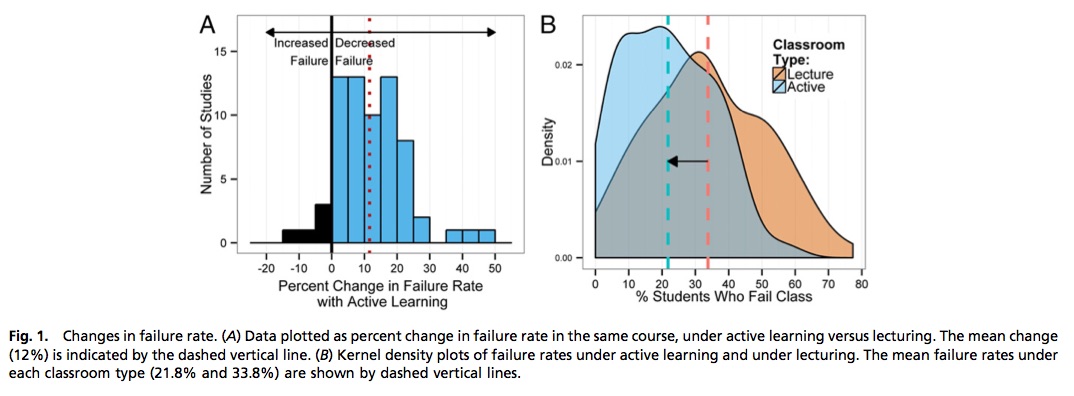What is it?
Active learning, first formally defined by Bonwell and Eison (1991), is anything that gets students actively engaged in thinking and doing in the classroom.
These activities range from a quick Think-Pair-Share activity where students pair up to think about and answer a question together, to full on group projects completed in class. This range of activities means that many professors are already engaged in active learning in their classrooms and that it is easy to implement active learning in any class. An entire course can be taught through active learning if that is appropriate, but active learning practices can be inserted into a traditional class where they will be most useful.
Why do it?
I started using active learning in very small doses about five years ago. My first attempt was with C. Wright Mills “The Promise of Sociology”, an introductory sociology staple that students struggle with. In the past, I spent about 20 minutes in lecture/discussion and was getting about 60% comprehension based on the comments in class and later essay test coverage of the material. Having tweaked and tweaked my presentation and found that I wasn’t getting better results, I went in search of new options. I found Think-Pair-Share. So, I tried it. Students were given a largely definitional question to answer. They got a minute to answer it on their own, and two minutes to discuss it with their partner (assigned by me). I randomly chose three or so groups to report back their answers. We then discussed it as a class for about ten more minutes.
I wasn’t sure going in that I had the right question for them, or if they could even manage to discuss the material in any useful way. I was blown away by the results. They were up to 80% comprehension on average, and the test showed that the worst students got the basic concept when they had not before, and the best students got nuances that were rarely covered in the past. This led me into more Think-Pair-Share activities and then into 15 minute group exercises. This semester I even set my students loose on some complex graphs in groups of six and they really did a great job pulling out the information that the graphs held. It wasn’t just the top students getting things – yes, they led the discussions, but everyone was making some contribution.
As a social scientist, one anecdote would not convince me, but fortunately there is abundant data that active learning done thoughtfully can have marvelous outcomes. One of the most recent meta-studies (Freeman, et al 2014)looked at failure rates in STEM courses and found that students in traditional lecture courses were 1.5 times more likely to fail than students in active learning courses.
Eddy and Hogan (2014) found that active learning classes improved overall test scores by 3% and worked even better for black and first generation students, doubling the improvement to 6%.
As a result of my experiences and this data, I am going to be delving more deeply into the world of active learning. I will share what I find with all of you on this blog. You should also feel free to stop by and chat about this.

